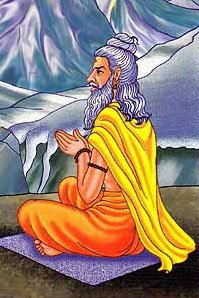Hamsasamyukta, Haṃsasaṃyukta, Hamsa-samyukta: 1 definition
Introduction:
Hamsasamyukta means something in Hinduism, Sanskrit. If you want to know the exact meaning, history, etymology or English translation of this term then check out the descriptions on this page. Add your comment or reference to a book if you want to contribute to this summary article.
In Hinduism
Purana and Itihasa (epic history)
Source: archive.org: Shiva Purana - English TranslationHaṃsasaṃyukta (हंससंयुक्त) refers to “that (chariot) which is fitted with the swan”, according to the Śivapurāṇa 2.5.19 (“Jalandhara’s emissary to Śiva”).—Accordingly, as Jalandhara said to Rāhu: “O messenger, you shall go there and tell the detached Yogin Śiva with matted locks of hair, fearlessly.—‘[...] I have forcibly seized the most excellent elephant of Indra, the most excellent horse, Uccaiḥśravas and the celestial tree pārijāta. The wonderfully excellent and the most divine aerial chariot fitted with the swan (haṃsasaṃyukta), belonging to Brahmā is now standing in my court-yard. The divine and excellent treasure Mahāpadma etc. of Kubera is in my custody. The umbrella of Varuṇa stands in my house shedding its golden brilliance. [...]’.”.

The Purana (पुराण, purāṇas) refers to Sanskrit literature preserving ancient India’s vast cultural history, including historical legends, religious ceremonies, various arts and sciences. The eighteen mahapuranas total over 400,000 shlokas (metrical couplets) and date to at least several centuries BCE.
See also (Relevant definitions)
Relevant text
No search results for Hamsasamyukta, Haṃsasaṃyukta, Haṃsa-saṃyukta, Hamsa-samyukta; (plurals include: Hamsasamyuktas, Haṃsasaṃyuktas, saṃyuktas, samyuktas) in any book or story.